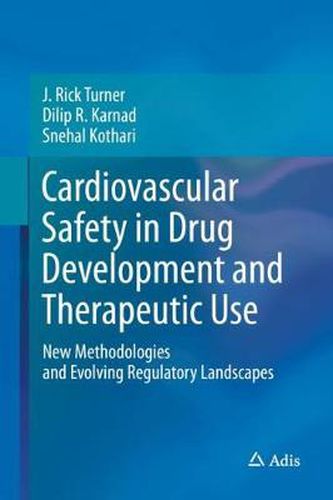Readings Newsletter
Become a Readings Member to make your shopping experience even easier.
Sign in or sign up for free!
You’re not far away from qualifying for FREE standard shipping within Australia
You’ve qualified for FREE standard shipping within Australia
The cart is loading…






At a time when the field of cardiac safety is going through important changes, this unique book provides the rationale for, and cutting-edge explanations of, new regulatory landscapes that will likely govern cardiac safety assessments globally for the foreseeable future. Exposure-response modeling is already being accepted by regulatory agencies in lieu of the traditional Thorough QT/QTc Study, and the Comprehensive in vitro Proarrhythmia Assay initiative is well under way.
Developments in the field of cardiovascular safety are also described and discussed in the book. These include the search for more efficient ways to exonerate new drugs for type 2 diabetes from an unacceptable cardiovascular liability, how best to address off-target blood pressure increases induced by noncardiovascular drugs, and the continued evolution of the discipline of Cardio-oncology.
a resource that will likely serve as a standard for years to come
Therapeutic Innovation & Regulatory Science, 2017;51(2):180
I have no hesitation in recommending this book as a valuable reference source
Journal for Clinical Studies, 2017;9(1):62-63
$9.00 standard shipping within Australia
FREE standard shipping within Australia for orders over $100.00
Express & International shipping calculated at checkout
At a time when the field of cardiac safety is going through important changes, this unique book provides the rationale for, and cutting-edge explanations of, new regulatory landscapes that will likely govern cardiac safety assessments globally for the foreseeable future. Exposure-response modeling is already being accepted by regulatory agencies in lieu of the traditional Thorough QT/QTc Study, and the Comprehensive in vitro Proarrhythmia Assay initiative is well under way.
Developments in the field of cardiovascular safety are also described and discussed in the book. These include the search for more efficient ways to exonerate new drugs for type 2 diabetes from an unacceptable cardiovascular liability, how best to address off-target blood pressure increases induced by noncardiovascular drugs, and the continued evolution of the discipline of Cardio-oncology.
a resource that will likely serve as a standard for years to come
Therapeutic Innovation & Regulatory Science, 2017;51(2):180
I have no hesitation in recommending this book as a valuable reference source
Journal for Clinical Studies, 2017;9(1):62-63